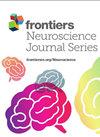On the basis of sex and sleep: the influence of the estrous cycle and sex on sleep-wake behavior
IF 3.2
3区 医学
Q2 NEUROSCIENCES
引用次数: 0
Abstract
The recurrent hormonal fluctuations within reproductive cycles impact sleep-wake behavior in women and in rats and mice used in preclinical models of sleep research. Strides have been made in sleep-related clinical trials to include equal numbers of women; however, the inclusion of female rodents in neuroscience and sleep research is lacking. Female animals are commonly omitted from studies over concerns of the effect of estrus cycle hormones on measured outcomes. This review highlights the estrous cycle’s broad effects on sleep-wake behavior: from changes in sleep macroarchitecture to regionally specific alterations in neural oscillations. These changes are largely driven by cycle-dependent ovarian hormonal fluctuations occurring during proestrus and estrus that modulate neural circuits regulating sleep-wake behavior. Removal of estrous cycle influence by ovariectomy ablates characteristic sleep changes. Further, sex differences in sleep are present between gonadally intact females and males. Removal of reproductive hormones via gonadectomy in both sexes mitigates some, but not all sex differences. We examine the extent to which reproductive hormones and sex chromosomes contribute to sex differences in sleep-wake behavior. Finally, this review addresses the limitations in our understanding of the estrous cycle’s impact on sleep-wake behavior, gaps in female sleep research that are well studied in males, and the implications that ignoring the estrous cycle has on studies of sleep-related processes.基于性别和睡眠:发情周期和性别对睡眠-觉醒行为的影响
生殖周期中反复出现的荷尔蒙波动会影响女性的睡眠-觉醒行为,也会影响用于临床前睡眠研究模型的大鼠和小鼠的睡眠-觉醒行为。在与睡眠相关的临床试验中,纳入同等数量的女性已经取得了长足进步;然而,在神经科学和睡眠研究中却缺乏雌性啮齿类动物的参与。由于担心发情周期激素对测量结果的影响,雌性动物通常被排除在研究之外。这篇综述强调了发情周期对睡眠-觉醒行为的广泛影响:从睡眠宏观结构的变化到神经振荡的区域特异性改变。这些变化在很大程度上是由发情前期和发情期发生的周期性卵巢激素波动驱动的,这种波动会调节调节睡眠-觉醒行为的神经回路。卵巢切除术消除了发情周期的影响,从而消除了特有的睡眠变化。此外,性腺完整的雌性和雄性在睡眠方面也存在性别差异。通过性腺切除术去除两性的生殖激素可以缓解部分性别差异,但并非所有性别差异。我们研究了生殖激素和性染色体在多大程度上导致了睡眠-觉醒行为的性别差异。最后,这篇综述探讨了我们对发情周期对睡眠-觉醒行为影响的认识的局限性、在男性睡眠研究中存在的女性睡眠研究的空白,以及忽视发情周期对睡眠相关过程研究的影响。
本文章由计算机程序翻译,如有差异,请以英文原文为准。
求助全文
约1分钟内获得全文
求助全文
来源期刊

Frontiers in Neuroscience
NEUROSCIENCES-
CiteScore
6.20
自引率
4.70%
发文量
2070
审稿时长
14 weeks
期刊介绍:
Neural Technology is devoted to the convergence between neurobiology and quantum-, nano- and micro-sciences. In our vision, this interdisciplinary approach should go beyond the technological development of sophisticated methods and should contribute in generating a genuine change in our discipline.
 求助内容:
求助内容: 应助结果提醒方式:
应助结果提醒方式:


